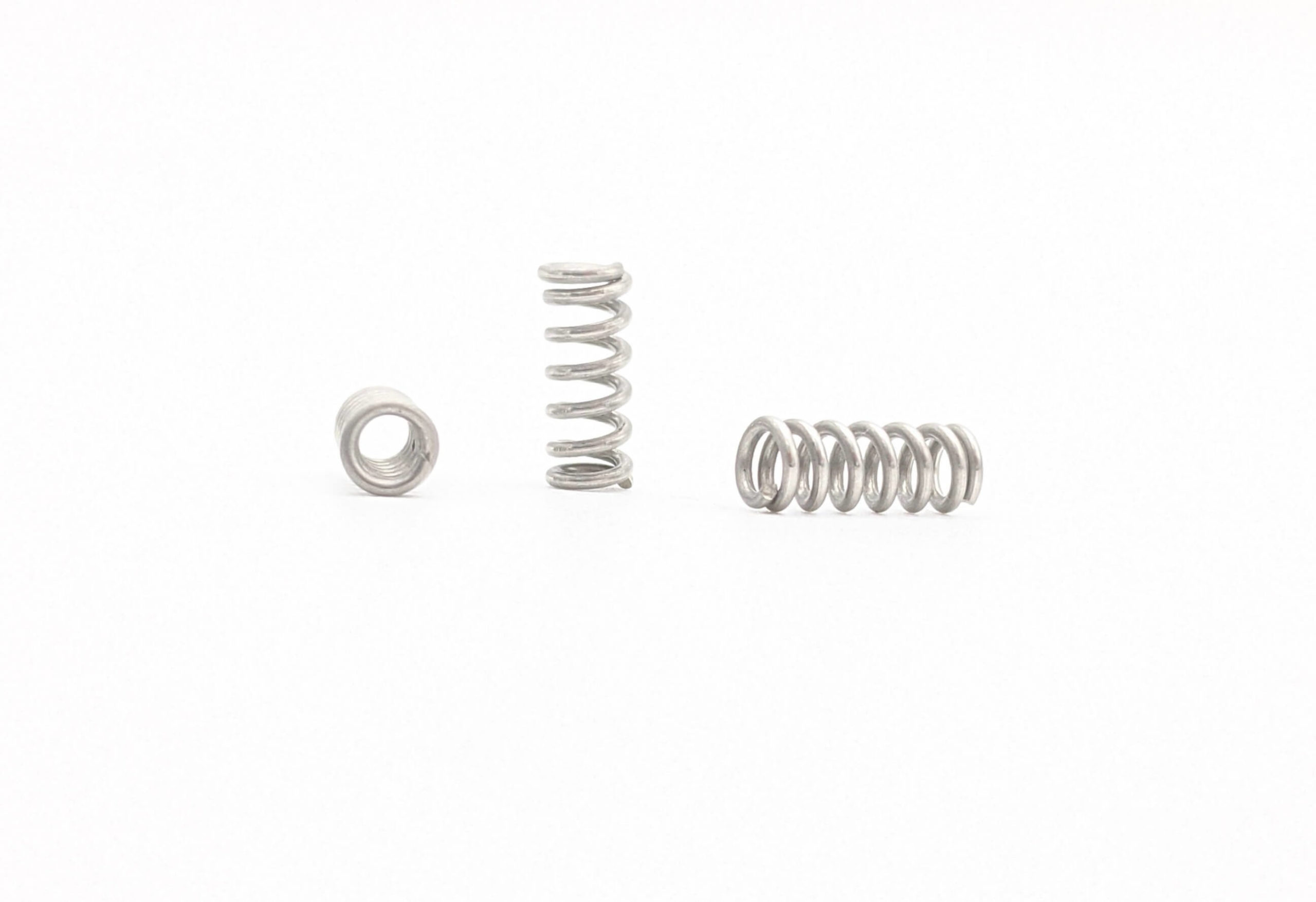Get unique, complex parts easily. No matter your requirements, Chaoyi Spring creates hard-to-produce coil springs and wire forms.
Let us help you create the custom wire form you need, from S-hooks and J-hooks to utility hooks and more.
We work closely with customers across a wide range of industries, helping them design and manufacture made-to-order parts.
Why choose Chaoyi Spring? We prioritize customer-focused collaboration, modern equipment and the latest technology to make your parts per print.
Find the information and guidance you need, from measuring a spring to learning about materials, placing an order and much more.
Have you ever wondered about the invisible force that powers everything from the simple act of bouncing a ball to the intricate workings of a car's suspension system? It's all


Have you ever wondered about the invisible force that powers everything from the simple act of bouncing a ball to the intricate workings of a car's suspension system? It's all thanks to the incredible concept of compressed spring potential energy. This fascinating phenomenon allows us to store and release energy efficiently, driving a vast array of everyday applications. In this exploration, we delve into the fascinating world of compressed spring potential energy, uncovering its secrets and understanding its profound impact on our world.

Imagine a coil spring, a humble yet remarkable invention. When we compress this spring, we're not merely squeezing it; we're actually storing energy within its structure. This stored energy is known as 'compressed spring potential energy,' a fascinating concept that has a wide range of applications.
The magic of compressed spring potential energy lies in the interplay of forces and deformation. Sir Robert Hooke, a brilliant 17th-century scientist, formulated a law that governs this relationship: Hooke's Law. This law states that the force exerted by a spring is directly proportional to its displacement from its equilibrium position. Think of it like a stretched rubber band – the more you stretch it, the harder it pulls back.
When we compress a spring, we're essentially storing energy within its elastic structure. This energy is a form of potential energy, waiting to be released. The amount of potential energy stored is directly related to the spring's stiffness (spring constant) and the amount of compression. The stiffer the spring, the more potential energy it stores for a given compression.
The power of compressed spring potential energy isn't just a theoretical concept; it's a driving force behind countless inventions and everyday objects.
Think about the simple joy of bouncing a ball. The act of compressing the ball stores potential energy, which is then released as kinetic energy, propelling the ball upwards. The same principle applies to a child's spring-powered toy. The spring stores energy when wound, and that energy is released to make the toy move.
But the applications go far beyond toys. In the automotive world, suspension systems rely on compressed spring potential energy to absorb shocks and bumps, providing a smooth ride. Shock absorbers, a key component of car suspension, use springs to damp oscillations and prevent excessive bouncing. These springs store and release energy efficiently, ensuring stability and comfort on the road.
Beyond vehicles, compressed spring potential energy finds applications in countless other fields. In mechanical clocks, springs power the intricate mechanisms that keep time. In door closers, springs provide the force to close the door smoothly and silently.
The list goes on, demonstrating the remarkable versatility of compressed spring potential energy. From delicate instruments to robust machinery, this fundamental concept is a cornerstone of modern engineering and technology.
The world around us is in constant motion, and compressed spring potential energy is a key player in making that motion possible. It allows us to store and release energy efficiently, providing the power for everything from simple toys to sophisticated machines. As we continue to explore the limits of science and technology, the concept of compressed spring potential energy will undoubtedly play an even more significant role in shaping our future.
The applications of compressed spring potential energy are not limited to the realms of toys and machines. In the world of sustainable energy, compressed spring potential energy is gaining momentum as a promising alternative to traditional power sources.
Imagine a system where kinetic energy generated from wind or solar power is used to compress springs, storing that energy for later use. This concept, known as 'spring energy storage,' has the potential to revolutionize the way we store and distribute renewable energy.
Moreover, compressed spring potential energy is being explored for its potential to power micro-robots and other miniature devices. This opens up exciting possibilities for medical advancements, such as targeted drug delivery and minimally invasive surgery.
The future of compressed spring potential energy is brimming with possibilities. As we delve deeper into the science of this remarkable phenomenon, we can expect to see even more innovative applications that will continue to shape our world in profound ways.
From the simple act of bouncing a ball to the intricate workings of advanced machinery, compressed spring potential energy plays a vital role in our lives. Its ability to store and release energy efficiently has revolutionized countless industries and continues to inspire new innovations. As we embrace the potential of this remarkable phenomenon, we can look forward to a future where compressed spring potential energy unlocks even greater possibilities, shaping a world that is both technologically advanced and environmentally conscious.
Browse some of the custom wire forms and springs that we manufacture. Don’t see what you need? We specialize in made-to-order products that meet your application requirements.
Visit Our GalleryNeed a custom wire form or coil spring? We make it work. Fill out the contact form and a representative will respond within 1 business day. If you have a PDF or CAD file, you can submit to request a quote.